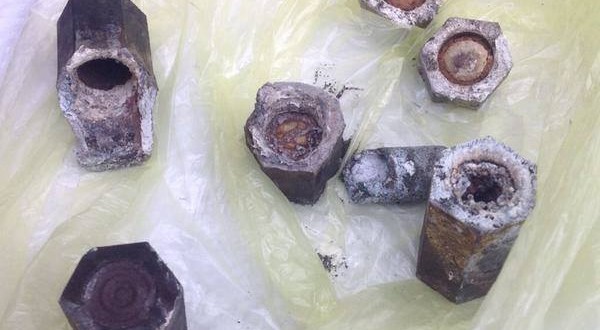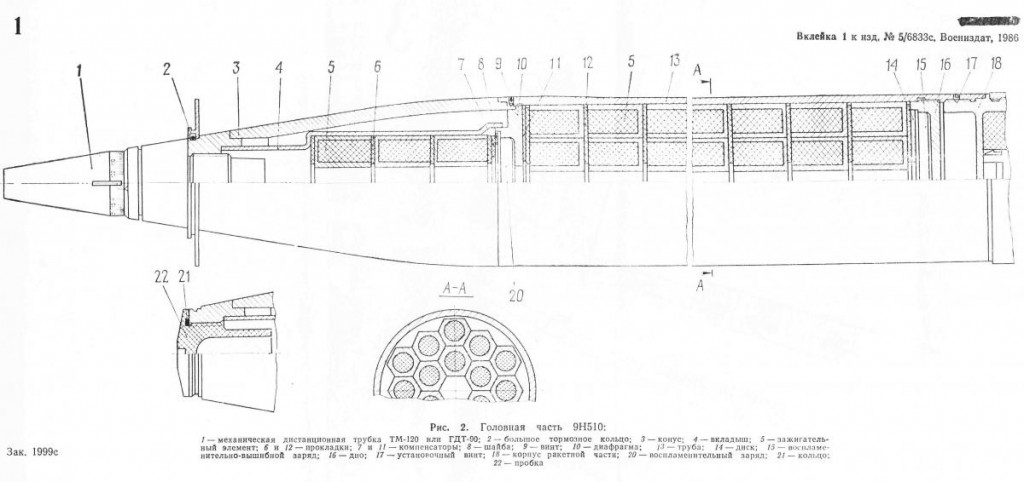Yuri Lyamin and Michael Smallwood
The remnants shown above, recovered from eastern Ukraine in late July, are incendiary components likely to be from the Russian 9M22S rocket. Fired by the BM-21 ‘Grad’ (Град; Hail) multiple launch rocket system (MLRS) and similar systems, the 122 mm 9M22S was developed by the Splav State Research and Production Association in 1971, and based on the Russian 9M22 high explosive fragmentation (HE-FRAG) rocket.
Replacing the 9M22 rocket’s standard high-explosive fragmentation warhead, the 9M22S carries the 9N510 warhead, containing 180 individual incendiary elements. Designed to create large fires in areas of vegetation and other flammable material, these incendiary elements are hexagonal prism shells made of magnesium alloy ML-5, and are filled with a pyrotechnic composition. Each element has a burning time of at least 2 minutes.
9M22S and 9N510 Technical Characteristics
Caliber: 122 mm
Maximum range: 19.89 km
Length: 2970 mm
Weight: 65.615 kg
Fuze: impact or time fuze (typically TM-120 or GDT-90)
Fuze weight: TM-120 – 0.97 kg, GDT-90 – 0.95 kg
Warhead weight: 17.8 kg
Number of incendiary elements: 180
Engine: solid-fuel rocket
Technical characteristics and warhead schematic taken from rbase.net. Thanks to Mark Hiznay (HRW) for the photo.


